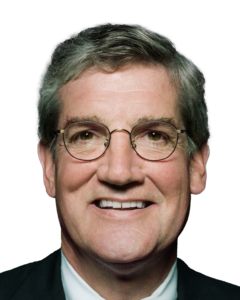Stephen O’Byrne | Why Academic Research Has Done Little to Solve the Problems of Executive Pay
Competitive target pay is a basic principle of modern executive pay, embraced by corporate directors, compensation consultants and proxy advisors. Providing a high percent of pay in stock (or other incentive pay) is a second basic principle of modern executive pay. But when companies follow both of these principles, the result is a low correlation of cumulative pay and cumulative performance; in other words, little pay for performance. The fundamental problem is that translating target dollar pay into shares without adjusting for performance creates a systematic ‘performance penalty’. Poor performance – a declining stock price – is rewarded with more shares to provide target dollar pay, while good performance – a rising stock price – is penalised with a reduction in shares to keep from exceeding target dollar pay.
Four Reasons Why Academic Research Has Failed to Change Practice
There is a vast literature on executive pay, with many papers pointing to the low correlation between pay and performance. However, the literature rarely mentions this inherent performance penalty and has done little to discourage directors, compensation consultants, and proxy advisors from embracing target dollar pay without any adjustment for past performance.
Stephen O’Byrne argues that academic research has had little impact on company pay practice for four reasons. One is the failure of academic researchers to study the history of executive pay. If they went back to pay plans in the first half of the 20th century, they would have realised that fixed sharing, not target dollar pay, was the foundation of executive pay before World War 2. The second reason for the limited impact is years of research focused on ill-designed measures of incentive strength. The third reason is the failure of academic researchers to develop a unified theory of corporate executive and investment manager pay. Operating companies have embraced the concept of target dollar pay, but investment funds have retained fixed sharing formulas. The fourth reason for the limited impact is that the few researchers who have realised the weaknesses of target dollar pay have failed to promote their work to practitioners.
Academics Have Ignored Fixed Sharing in Public Companies Before World War 2
Academic researchers rarely study executive pay practices before the U.S. government required annual pay disclosures in the mid-1930s. These pay practices are revealed in books such as General Motors CEO Alfred Sloan’s memoir My Years with General Motors, but they don’t lead easily to papers with quantitative research. In 1922, GM adopted a bonus formula that made all management incentive pay – both stock and cash bonuses – equal to 10% of profit in excess of 7% of book equity. It used this formula, without any change, for 25 years and maintained the basic formula, with minor modifications, from 1918 to 1982.
With a fixed sharing formula (but not with target dollar pay), current performance affects expected future pay. When profitability changes, the new level of profit is often likely to be sustained in the future, so expected future pay changes, rising with good performance and declining with poor performance. This means that a key component of executive wealth – the present value of expected future pay – is sensitive to current performance.

Jensen and Murphy’s Incentive Measure Led Academic Research Astray
Michael Jensen and Kevin Murphy wrote a paper in 1990 that argued that CEO incentives were weak because a $1,000 increase in shareholder wealth increased CEO wealth by only $3.25. This paper, with more than 10,000 citations, has guided much subsequent research. It is widely thought to be a major cause of the huge increase in executive pay in the 1990s.
The right measure of incentive strength is the ratio of percent change in executive wealth to percent change in shareholder wealth – what O’Byrne calls ‘wealth leverage’. To provide a strong incentive – wealth leverage of 1.0 – a 1% increase in shareholder wealth needs to increase executive wealth by 1%. Increases in target pay through larger annual equity grants increase Jensen and Murphy’s incentive measure but don’t increase wealth leverage. Higher target pay increases unvested stock held, but it also increases the present value of expected future pay – which has zero wealth leverage when a company embraces target dollar pay. Since the increase in the present value of expected future pay will normally be much greater than the increase in unvested stock held, wealth leverage will decline despite rising equity pay.
Academics Have Failed to Reconcile Executive Pay with Hedge Fund and Private Equity Pay
While executive pay growth has greatly exceeded median wage growth since 1990, pay in hedge funds and private equity, which use fixed sharing formulas, is much higher than executive pay. Institutional Investor reported seven hedge fund managers making more than $1 billion in 2022. By contrast, the new CEO of Amazon, Andrew Jassy, received a promotion stock grant of $212 million, a grant intended to cover ten years of future equity compensation. CEOs of operating companies, hedge funds, and private equity all spend the bulk of their time on capital allocation decisions. Academic researchers have made little effort to explain why capital allocators should be paid so differently. If they had, they would have had to explain why target dollar pay is efficient for operating companies while fixed sharing is efficient for hedge funds and private equity.
The Academic Authors of a Brilliant Solution Dropped the Ball
In 2012, ‘Dynamic CEO Compensation’ – a brilliant paper by Alex Edmans, Xavier Gabaix, Tomasz Sadzik, and Yuliy Sannikov – showed that there was a simple, practical way to ensure perfect pay for performance with strong incentives. First, put the present value of expected future market pay for the CEO into a trust (called a ‘Dynamic Incentive Account’ or DIA). Second, invest x% of the DIA in stock and (1 – x)% in cash, and third, continuously rebalance the DIA to maintain x% in stock, selling stock when the price rises and buying stock when the price declines. Edmans and colleagues ‘solve’ the performance penalty problem by eliminating annual grants.
Sadly, Edmans and colleagues have given up on promoting their work to corporate directors, compensation consultants, and institutional investors. In 2020, Edmans wrote a book for business and public policy leaders called Grow The Pie: How Great Companies Deliver Both Purpose and Profit. The book included a chapter on incentives but failed to mention the DIA. In a subsequent paper, Edmans argued that academics should focus on the role of ‘fairness considerations’ in setting CEO pay.
Practitioners Need Better Academic Research
Corporate directors, compensation consultants, and proxy advisors fail to appreciate the problems of target dollar pay. They make no effort to measure wealth leverage or even the correlation of pay and performance, and accept a high percent of pay at risk as definite proof of a strong incentive. These practitioners really need insightful academic research to help them provide better oversight for executive pay.
SHARE
DOWNLOAD E-BOOK
REFERENCE
https://doi.org/10.33548/SCIENTIA1061
MEET THE RESEARCHER

Mr Stephen F O’Byrne
Shareholder Value Advisors
Larchmont, NY
USA
Mr Stephen O’Byrne is President and co-founder of Shareholder Value Advisors Inc., a consulting firm that helps companies increase shareholder value through better performance measurement, incentive compensation and valuation analysis. His work on measuring the strength and cost-efficiency of top management incentives has been published in the Harvard Business Review, the Journal of Investing and the Journal of Applied Corporate Finance. He has a BA (Political Science) and a JD from the University of Chicago, an MS (Mathematics) from Northwestern and is a Certified Public Accountant.
CONTACT
E: sobyrne@valueadvisors.com
W: www.valueadvisors.com
FURTHER READING
S F O’Byrne, Why has academic research had so little impact on US executive pay practice?, Journal of Applied Corporate Finance, 2023, 1–8. DOI: https://doi.org/10.1111/jacf.12564
REPUBLISH OUR ARTICLES
We encourage all formats of sharing and republishing of our articles. Whether you want to host on your website, publication or blog, we welcome this. Find out more
Creative Commons Licence (CC BY 4.0)
This work is licensed under a Creative Commons Attribution 4.0 International License. 
What does this mean?
Share: You can copy and redistribute the material in any medium or format
Adapt: You can change, and build upon the material for any purpose, even commercially.
Credit: You must give appropriate credit, provide a link to the license, and indicate if changes were made.
SUBSCRIBE NOW
Follow Us
MORE ARTICLES YOU MAY LIKE
Dr Marta Berrocal-Lobo | Unlocking the Potential of Essential Oils: Illuminating Epigenetic Effects on Plant Defense Mechanisms
Essential oils (EO) are potent in enhancing plant stress responses and mitigating seed-borne diseases, particularly in high-value crops such as tomatoes. While their direct impacts are recognised, the indirect influences on plant growth, metabolism, and immune responses against phytopathogens remain uncertain. Dr Marta Berrocal-Lobo, an esteemed Associate Professor and researcher at the Polytechnic University of Madrid, in collaboration with the Group of Biopesticides led by Dr Azucena Gonzalez-Coloma, is unravelling the transcriptomic and metabolic responses of tomato seeds treated with an antifungal EO against the pathogen Fusarium oxysporum sp. Their findings pave the way for harnessing EO in sustainable agriculture.
Dr Yusuke Mori | Changing Demands and the Optimisation of Processes in Japan’s Energy Landscape
The Snake River in the northwestern United States was once home to abundant populations of Chinook salmon. However, the building of hydropower dams has led to a dramatic drop in their numbers and puzzling changes in their migratory behaviour. Dr Charles Coutant and other biologists in the region embarked on a mission to uncover exactly how these dams are interfering with the crucial downstream journey of young Chinook salmon. His creative approach, drawing on knowledge from many different fields, has revealed a hidden culprit that may be throwing these fish off course.
Dr Charles Coutant | Dams, Disruption, and the Plight of the Chinook Salmon: Unravelling the Mystery of Delayed Migration
The Snake River in the northwestern United States was once home to abundant populations of Chinook salmon. However, the building of hydropower dams has led to a dramatic drop in their numbers and puzzling changes in their migratory behaviour. Dr Charles Coutant and other biologists in the region embarked on a mission to uncover exactly how these dams are interfering with the crucial downstream journey of young Chinook salmon. His creative approach, drawing on knowledge from many different fields, has revealed a hidden culprit that may be throwing these fish off course.
Christopher Gilbert | A Thorough Inquiry into Copper Super-Cycles
Understanding super-cycles is crucial for stakeholders such as investors, policymakers, and industry leaders as it offers insights into long-term trends and dynamics in commodity prices. Christopher Gilbert plays a pivotal role in providing stakeholders with the foresight needed to navigate fluctuations in metal prices and volatile markets confidently.





